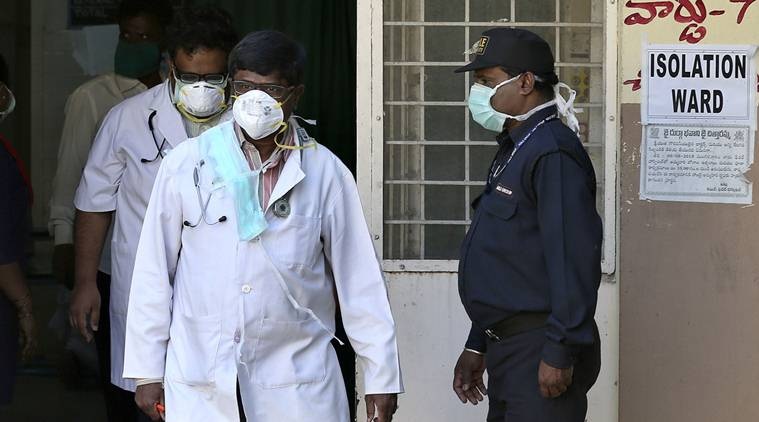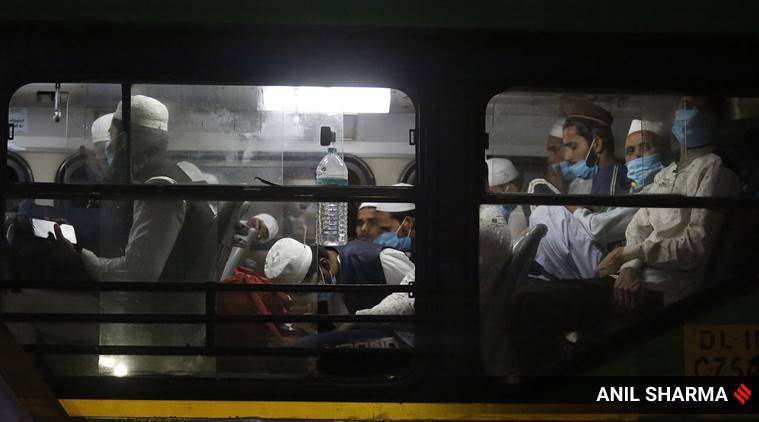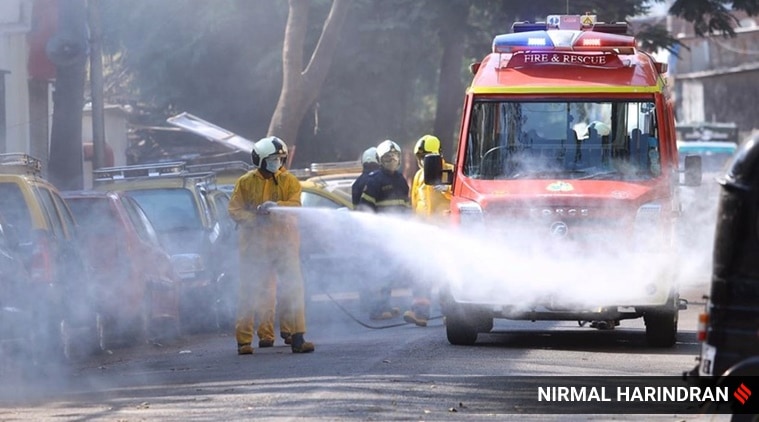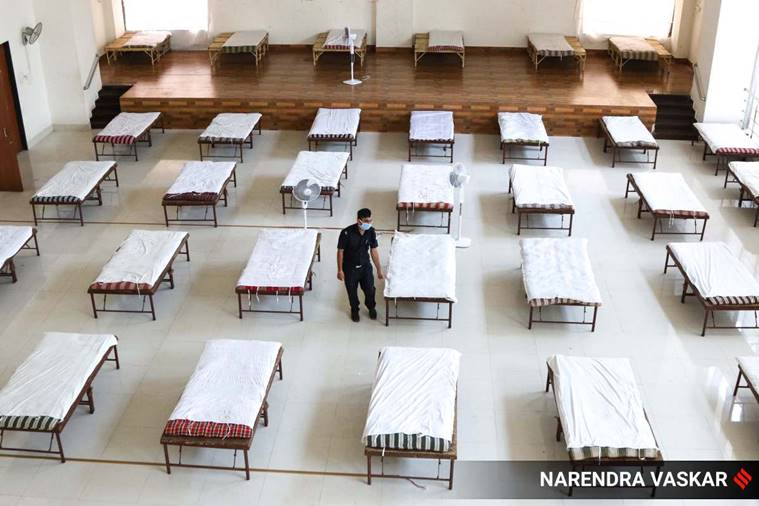 With 505 fresh cases being confirmed in the last 24 hours, the total number of cases is now 3,577, while the death toll has gone up to 83; on March 30, the tally was 1,251 cases and 32 deaths.
With 505 fresh cases being confirmed in the last 24 hours, the total number of cases is now 3,577, while the death toll has gone up to 83; on March 30, the tally was 1,251 cases and 32 deaths.
While there has been a sharp spike in the number of novel coronavirus (COVID-19) cases and deaths over the past week, over 80% of the total positive cases have been traced to 62 districts across the country.
Top government sources said restrictions are likely to continue in these districts even after the nationwide 21-day lockdown ends on April 14.
Across the country, 274 districts have reported COVID-19 cases so far.
Follow LIVE updates on Coronavirus pandemic
With 505 fresh cases being confirmed in the last 24 hours, the total number of cases is now 3,577, while the death toll has gone up to 83; on March 30, the tally was 1,251 cases and 32 deaths.
According to Health Ministry estimates, the current rate of doubling of COVID-19 cases is 4.1 days, but it would have been 7.4 days if the Tablighi Jamaat congregation had not happened in Delhi last month.
“There is a clear geographical skew in the spread; 62 districts are currently reporting over 80% cases and these will be the focus of an aggressive containment strategy in the Bhilwara model. We are also stepping up testing. In the last two days, the number of tests was doubled; we will again double in the next few days,” said a source.
According to what is unofficially being referred to in the government as the “Bhilwara model”, the containment zones, or areas reporting large number of cases, in these 62 districts will be sealed off. The strategy was found to be effective in Bhilwara (Rajasthan), which had emerged as a hotspot last month.
Urjit Patel writes | Managing COVID: A task well-begun
 People who showed coronavirus symptoms being taken to various hospitals from the Nizamuddin area in New Delhi (Express photo by Anil Sharma)
People who showed coronavirus symptoms being taken to various hospitals from the Nizamuddin area in New Delhi (Express photo by Anil Sharma)
Meanwhile, following reports and studies hinting at the possibility of the virus being airborne, the Indian Council of Medical Research (ICMR) said there was no credible evidence in this regard. “If this was an airborne infection, and not a droplet infection, every person in a family would be infected; the same would apply for other patients in a hospital. But we have not seen any evidence of that happening so far. There have been one million cases the world over, and no such instance has been found. I think we should trust that evidence,” said Dr R R Gangakhedkar, head of epidemiology and infectious diseases, ICMR.
Amid criticism that India is not doing enough tests, the number of daily tests has almost doubled in the last two days, from 5,800 on April 2 to 10,034 on April 4. With 9,369 samples being tested on Sunday, a total of 89,534 samples have been tested so far.
On Saturday, the ICMR issued an advisory for the use of rapid antibody tests in some areas. The results of these tests have to be conveyed immediately to the ICMR.
In next 2 months, India needs 27 million N95 masks, 50000 ventilators
 A Brihanmumbai Municipal Corporation (BMC) worker in Mumbai during the sanitisation drive on Jasmine mill road in Dharavi.
A Brihanmumbai Municipal Corporation (BMC) worker in Mumbai during the sanitisation drive on Jasmine mill road in Dharavi.
In a letter to Health Secretary Preeti Sudan, Dr Balram Bhargava, Secretary, Health Research, wrote: “Overall testing for COVID-19 using real-time RT PCR is increasing and we will be approaching full capacity in near future. At the same time, we are expecting delivery of rapid test kits (blood based) for use in response to COVID-19 situation. ln this regard, National Task Force deliberated with experts for ascertaining use of these rapid test kits.”
At the daily briefing on Sunday, Lav Agarwal, Joint Secretary, Health Ministry, said Cabinet Secretary Rajiv Gauba, in a video conference with district magistrates across the country, emphasised the level of preparedness “to the level of being over-prepared”.
Gauba directed all district magistrates to ensure smooth operation of pharma units for manufacture of medicines and medical equipment. All districts have been advised to draw up a COVID-19 crisis management plan. The district magistrates of all the 274 districts where COVID-19 cases have been reported were requested to ensure uniformity in the crisis management plan.
India is also pressing into service CBNAAT (cartridge based nucleic acid amplification test) machines for COVID-19 tests.
Uttarakhand Tablighi members warned: ‘Report or face murder bid charge if case reported’
 120 beds for quarantine getting prepared at emergency hospital in Varkari Bhavan Belapur, Mumbai. (Express photo by Narendra Vaskar)
120 beds for quarantine getting prepared at emergency hospital in Varkari Bhavan Belapur, Mumbai. (Express photo by Narendra Vaskar)
Agarwal said the personal protective equipment (PPE) situation has improved after some “initial shortages” as they were being imported. “However, now domestic manufacturers have started production and we are procuring more of them. We have sent all the initial stocks to the states on the basis of the case load but have asked states and DMs to rationalise their use,” he said. He added that social distancing and lockdown are the biggest “social vaccine” against COVID-19.
Agarwal said 14,522 self help groups in 399 districts of 24 states have started producing masks. “The idea is that instead of the virus chasing us, we should chase the virus,” he said.
The Health Ministry has issued guidelines for quarantine facilities and handling waste generated during treatment or quarantine of COVID-19 patients.